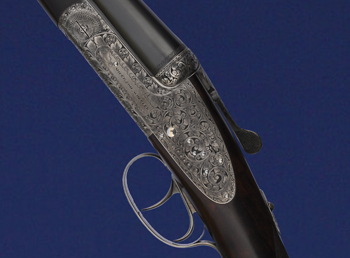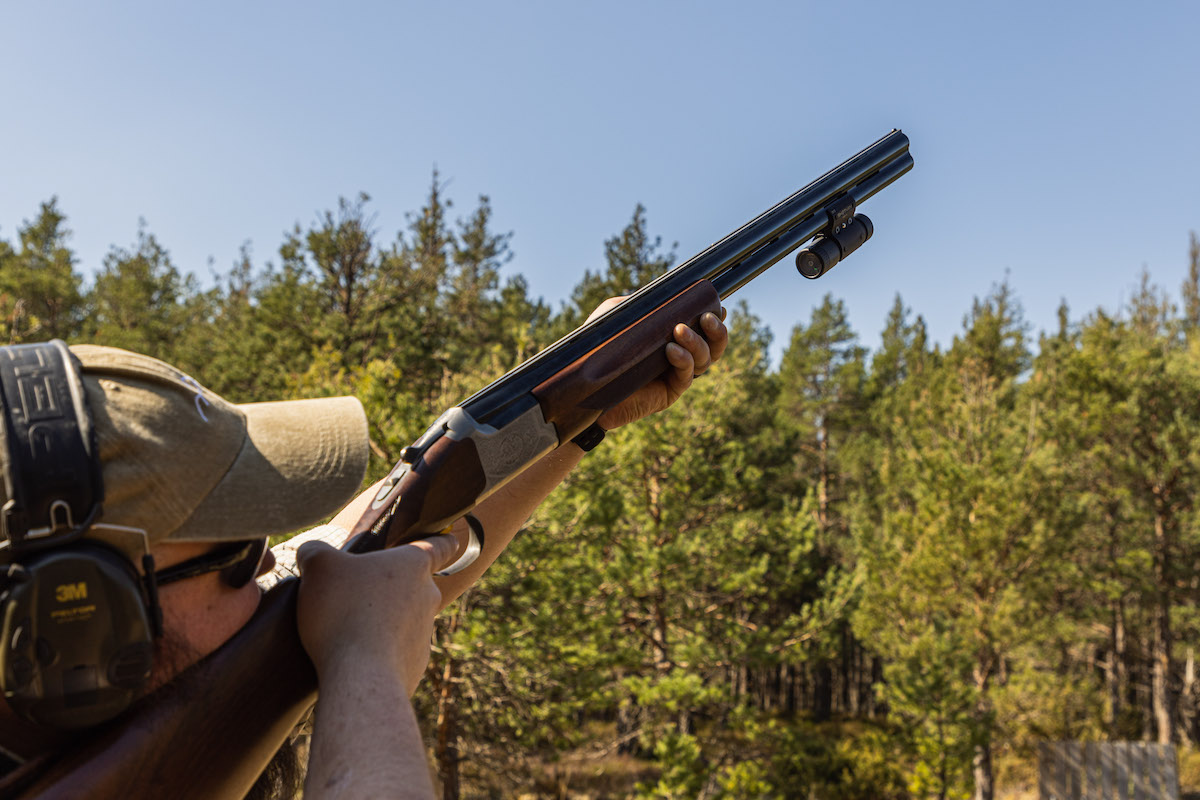Anderson Wheeler 20-bore shotgun review

Anderson Wheeler 20-bore shotgun review
Anderson Wheeler 20-bore shotgun
Anderson Wheeler is, as recently noted, the new kid on the London gunmaking block.
Based in Mayfair?s Shepherd Market, it has hit the ground running with an impressive range of quality shotguns and rifles.
This is no mean achievement.
The firm makes both bespoke best guns and rifles (from £27,500 for the smoothbores) and, like several others today ? EJ Churchill, William Evans and William Powell among them ? also offers a range of shotguns of Continental origin.

The over-and-unders, which start at £11,400, are of typical Gardonne (ie Brescian) mechanical pattern with a little London style added.
The side-by-sides are of Spanish manufacture as far as the metalwork is concerned, with stocking in the UK and French engraving in English style.
The results look good.
The test gun is a 20-bore side-by-side (12s are available).
The bottom line is not too frightening at £13,200 ? a little less than some of the quality opposition but without any evident reduction in quality or finish.
The lines of the 20-bore Anderson Wheeler are elegant and the specification sound.

The barrels are 29in long (or to spec) and have fixed chokes and a concave rib.
The action is a full seven-pin sidelock with assisted opening of Holland spring plunger type.
The well-figured stock has a straight hand grip and a splinter fore-end.
The engraving on the brush-polished rounded-bar action is the house standard ? an open, quite bold scroll.
The gun hits the scales at only 6lb 5oz, a lovely weight for a longer-barrelled 20.
Balance is excellent, too ? slightly forward of the cross pin. So far, so good. There are not many, if any, unpleasant surprises.
The London-proofed barrels are proper chopper lump, machined from forgings.
They are well presented with better than average striking up and good internal finish.

The rib is swept as noted, an unobtrusive pattern when shooting but my preference is for a tapered, flat-topped style because I think it enhances both pointability and precision in some circumstances.
The plain brass bead on the test gun is in good proportion to the muzzles and fit for purpose.
The action, which bears a striking resemblance to an AyA (because it emanates from that respected factory), is of round-bar style and polished off as noted.
The engraving is executed by hand (the silver finish accentuates it well).
The pinheads are polished and the Anderson Wheeler name is in a panel on the forward part of both lock plates.
The svelte action belly is also covered in scroll with ?London? in a panel up towards the knuckle end.
It all seems to be in good taste and not too glitzy for a working gun. Wood-to-metal fit is excellent.
The stock ? well-figured walnut of good colour ? is finished to a high standard, with classical proportions to the nicely tapered comb and butt and the splinter fore-end (the latter equipped with an Anson rod-and-button release catch).
Clients may choose from blanks at the shop.
The chequering, hand cut like the engraving, is especially neat.
This gun had been made for the shelf with a length of pull of about 15in and drop of 1½in and 2in ? standard measurements which might easily be altered.
Bespoke measurements, however, are a no-cost option.
TECHNICAL DATA
Jointing of barrels to action was expertly done. Both barrels have marked diameters of 15.8mm ? fairly tight but not excessively so.

The barrel walls were consistently 30 thou or thicker, which is reassuring; one sees more and more old guns with worryingly thin barrels.
Chokes were quarter and half ? perfect.
And, as well as having good trigger pulls, all the other controls operated positively.
I prefer the look of a ramped safety, but the function of the Purdey button style as used here is usually more positive.
The test gun has intercepting safety sears ? the norm on a good-quality sidelock.
The safety is automatic, as it should be on a game-gun.
There are disc-set strikers, as seen on most Purdeys and AyAs (which may be removed from the action face with a suitable tool allowing for the relatively simple replacement of strikers and return springs), and there is also a hinge-pin which may be replaced if necessary.
There are gold-line cocking indicators.
SHOOTING IMPRESSIONS
The Anderson Wheeler shot well. I have tried a number of guns of very similar specification in the past few years.

This shot as well as any of them ? it was fast-handling but the 29in barrels make it pointable, too, and just a little steadier than a 28in gun.
There were no unpleasant harmonics either on closing or firing (as I have encountered in one similar gun).
The mechanical specification ? essentially Holland & Holland with Southgate ejector work ? is well proven.
The specification could not easily be bettered for a 20-bore.
Is it worth paying for extra finish and the cachet of a London name? I think it may be, both for the aesthetics, which are to British taste, and for the excellent specification.
These higher-end guns made for a specialist and precise British market seem to have a little more care lavished on them.
Their jointing and trigger pulls are often better ? a little more quality control seems evident in their production.

To get it so right with a new gun is worthy of praise.
Anderson Wheeler 20-bore shotgun
£13,200
www.andersonwheeler.co.uk








